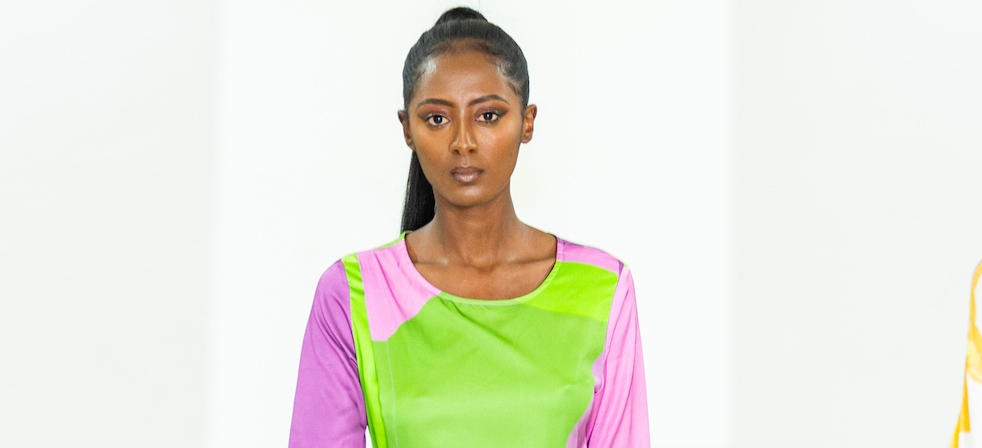In the vibrant heart of Addis Ababa, where tradition meets innovation, Mahlet Teklemariam has emerged as a leading force in the African fashion scene. As the founder and organizer of the Hub of Africa Fashion Week (HAFW), which has graced the Ethiopian capital annually since 2010, Mahlet has dedicated her career to fostering a platform that celebrates and elevates African designers on a global scale. Born in Addis Ababa and later immersed in the dynamic fashion landscape of New York, Mahlet returned to her roots in 2008, fueled by an unwavering passion for fashion and a vision to bridge cultures through style.

Mahlet Teklemariam, Founder of HAFW
During her tenure as a fashion editor at Tadias Magazine, Mahlet gathered invaluable insights that would eventually inspire her to launch an event reminiscent of the prestigious New York and Paris Fashion Weeks. In 2009, teamed with fellow creatives in Ethiopia, she birthed the idea of the Addis Ababa Fashion Week, setting in motion a movement aimed at showcasing the rich talent within Africa. Today, HAFW stands as a beacon for emerging designers, attracting international buyers and fashion editors eager to discover the next wave of fashion innovation from the continent.
Hi Mahlet, can you tell us when you founded Hub of Africa Fashion Week and describe your role in it?
I established Hub of Africa Fashion Week in 2010, and I oversee the organization and execution of the event. HAFW has grown to become one of the premier fashion events on the continent, dedicated to promoting African fashion, creativity, and entrepreneurship.
HAFW was created to offer both emerging and established African fashion designers, models, artists, and entrepreneurs a platform to showcase their talents and connect with industry leaders. It serves as a catalyst for the development of the African fashion industry.

Masa Mara – Rwanda
The event is hosted in Addis Ababa, Ethiopia’s capital, which is renowned for its rich cultural history and its burgeoning impact on the global fashion scene — a development significantly spurred by HAFW.
Today, the fashion week draws a diverse audience, attracting designers and media from across Africa and beyond, solidifying its status as a central hub for global fashion professionals and enthusiasts.
For me, it is important to say that HAFW goes beyond fashion; it plays a crucial role in economic empowerment by linking fashion entrepreneurs with buyers and investors, thus promoting growth in the fashion sector.

Aert- Kenya
Moreover, in recent years, we have put a stronger focus on sustainability and social responsibility, advocating for eco-friendly and ethical fashion practices while supporting various social initiatives.
The event features runway shows where designers present their latest collections, allowing attendees to discover emerging trends and innovations in African fashion. It also includes exhibitions, workshops, and networking opportunities.
To make it stronger, HAFW collaborates with a range of partners, including government entities, embassies, corporate sponsors, and NGOs, all of which contribute to the event’s success.
We are also committed to fashion education as well, providing a platform for aspiring designers and models to gain essential exposure and experience.

Reborn
What types of designers and brands participate in the event?
HAFW features African brands based on the continent, as well as designers in the diaspora who produce or source materials from Africa. We have welcomed designers from South Africa, Somalia, Kenya, Uganda, Ghana, Nigeria, Ethiopia, Tanzania, Morocco, Gabon, Senegal, and many more.
Living in Ethiopia, how do you perceive fashion waste in the apparel industry?
In Ethiopia, we don’t experience fashion waste in the same way as other regions. Clothing is often recycled and repurposed, circulating from one person to another. In general, in Africa, we prioritize need and affordability, leading to minimal waste.

Mastewal Alemu – Ethiopia
What observations do you have regarding sustainability in Ethiopia and Africa?
In Ethiopia, unused clothing often finds a second life; for example, fabrics that are no longer worn may be transformed into cleaning mops. This recycling practice reflects our emphasis on affordability and necessity.

Metii
How do you envision the future of fashion in Africa by 2030?
I envision a continued growth trajectory for the fashion industry in Africa, with an increase in the number of young, successful designers emerging onto the scene. As the continent has a youthful population, I hope that local brands are supported and embraced, encouraging consumers to purchase and wear “Made in Africa” products to build the industry.
What are your current projects and aspirations?
Alongside organizing HAFW, I am dedicated to uplifting young and upcoming designers through our platforms. I also aim to establish a fashion council in Ethiopia to provide greater support for startup brands. Additionally, we plan to organize a trade fair to attract buyers from Africa and beyond, helping brands sustain their businesses and thrive in this complex market.
Photos : HAFW – Cover : Aert
Read more on ethical fashion in our magazine




